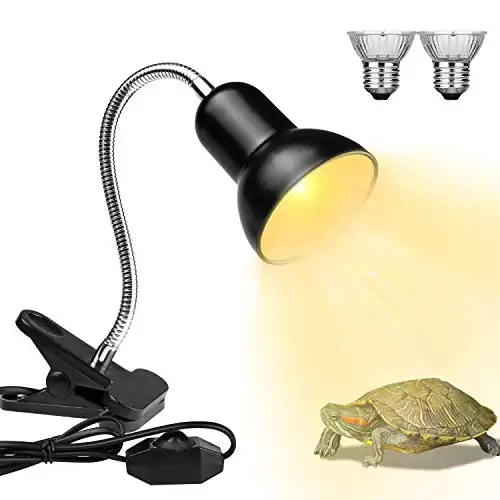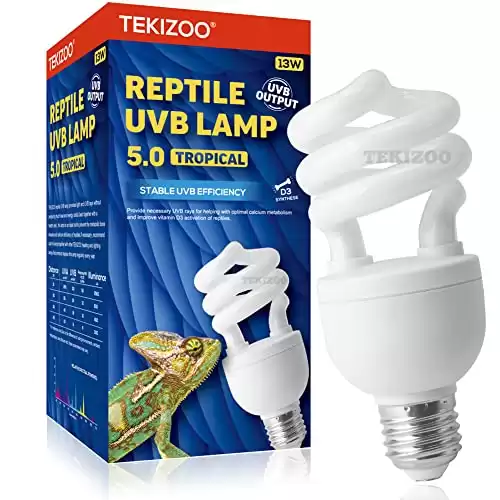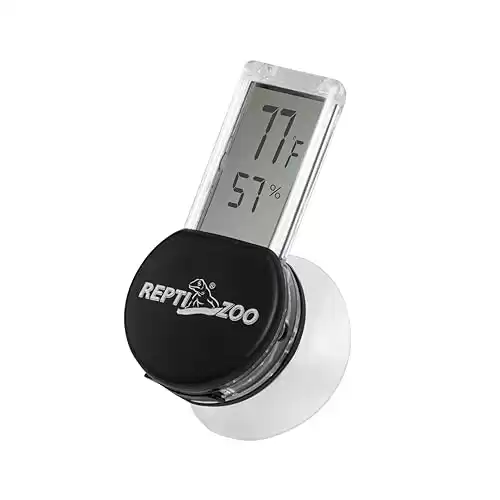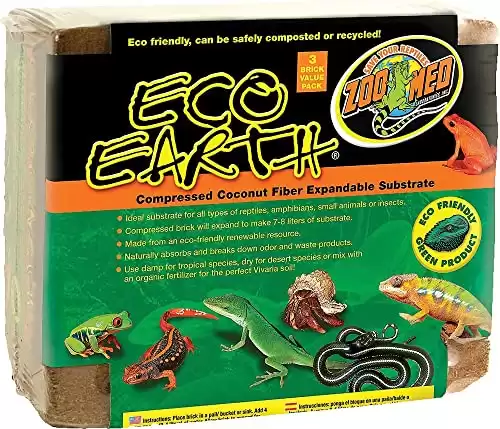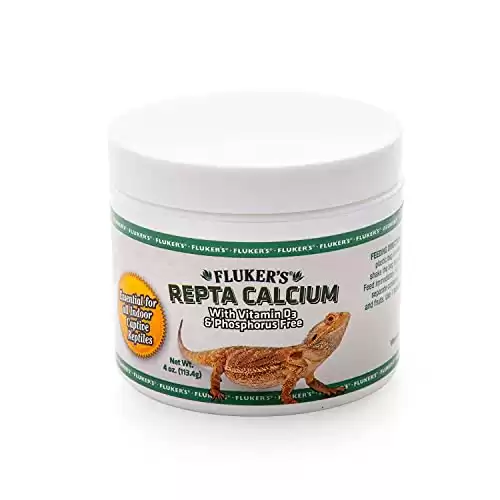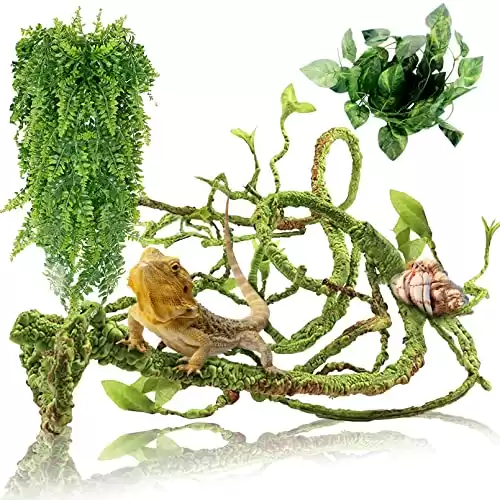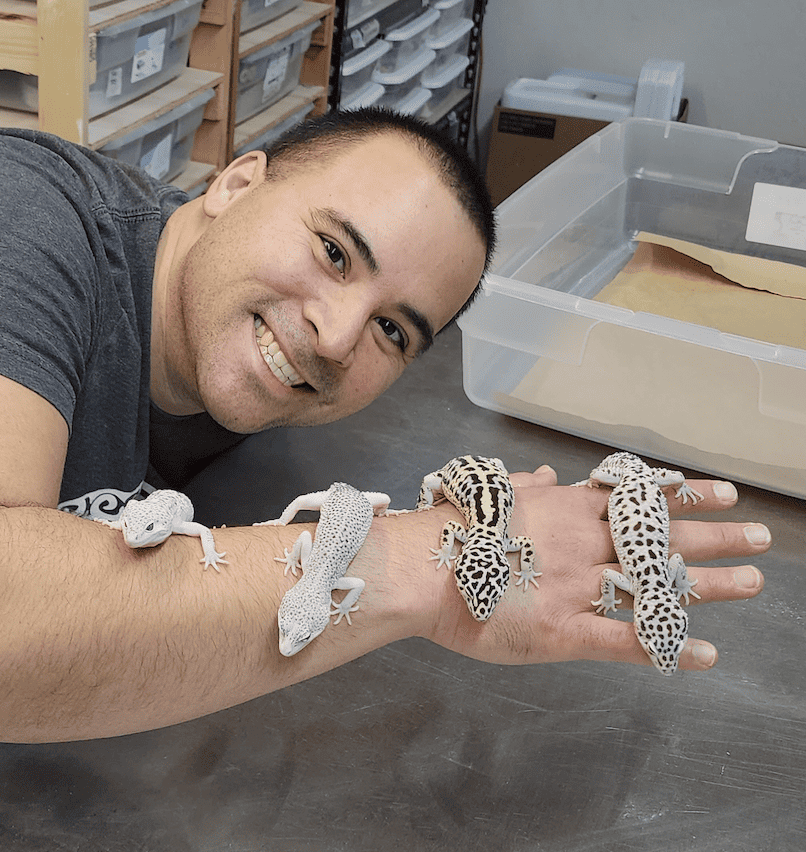What’s not to like about leopard geckos? They’re docile, easy to care for, and can live for up to decades as pets.
But as you try to find your next pet, the Mack snow leopard gecko shouldn’t be missed.
These little dotted cuties will brighten up your day with their playful antics and vibrant personalities. In this article, we’ll explore everything you need to know about these lovable creatures.
Description of Mack Snow Leopard Geckos
Reptile lovers and breeders favor leopard geckos because they’re easy to breed and perfect for first-time gecko keepers. They are one of the most popular leopard gecko morphs.
So, how did the charming Mack snow leopard geckos get their unique name?
The “Mack” in their name is a tribute to John and Amy Mack, the first breeders who bred this fascinating morph. And “Snow” refers to their stunning white snowy bodies, which are dotted with black spots.
Characteristics of Mack Snow Leopard Geckos
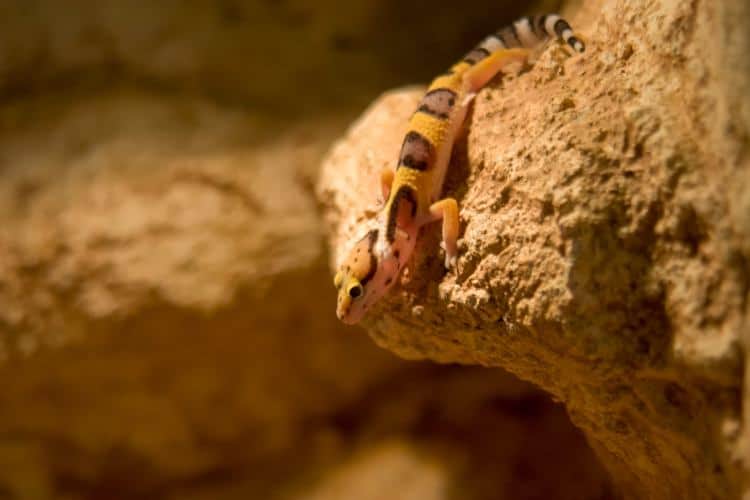
Mack snows are relatively small in size, about 8 inches long. They’re slender and elongated, with a shape that allows them to move gracefully through their habitat. They have triangular heads with gentle curves, giving them a unique and charming appearance.
But don’t let their small bodies deceive you because they pack a big punch of personality!
Now, it’s time to talk about their most distinctive feature: their tail. Their long tail allows them to grasp onto different objects and contributes to their agility. It also stores fats when food is scarce.
These fascinating creatures have almond-shaped eyes with vertical pupils to help them adapt to different light conditions, allowing them to spot prey and threats easily. These are different from the solid black colors of the super snows.
Though not visible to the naked eye, Mack snows have tiny ear openings concealed beneath the scales of their white body. These specialized ears are sensitive to vibrations, enabling them to detect movements in their surroundings.
Ask the Expert
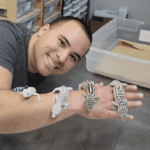
How are Mack Snow Leopard Geckos bred?
Mack Snow is an incomplete dominant trait in leopard geckos. This means one copy of the genetic trait will reduce the level of xanthophore (yellow pigment) production in the offspring effectively making the geckos less yellow, orange, red or green. These offspring tend to have a faded color appearance. However, two copies of the genetic trait will completely remove all xanthophore production therein making the gecko a completely stark white and black contrast. Here in the photograph you can see from my left to right a high white Mack Snow, a Mack Super Snow Eclipse, a high black Mack snow, and a Mid-Contrast Mack Snow. Variation of color and pattern can be achieved when working with the single copy form but the complete dominant form of two copies often will almost always end in the same result, a leopard gecko that has a pure white base with rich and plenteous black spotting.
Frank A. Cuzzolina is a Gecko and Reptile Breeder, and owner of geekygeckocreations.com. You can follow him on Instagram, Youtube, TikTok and Facebook.
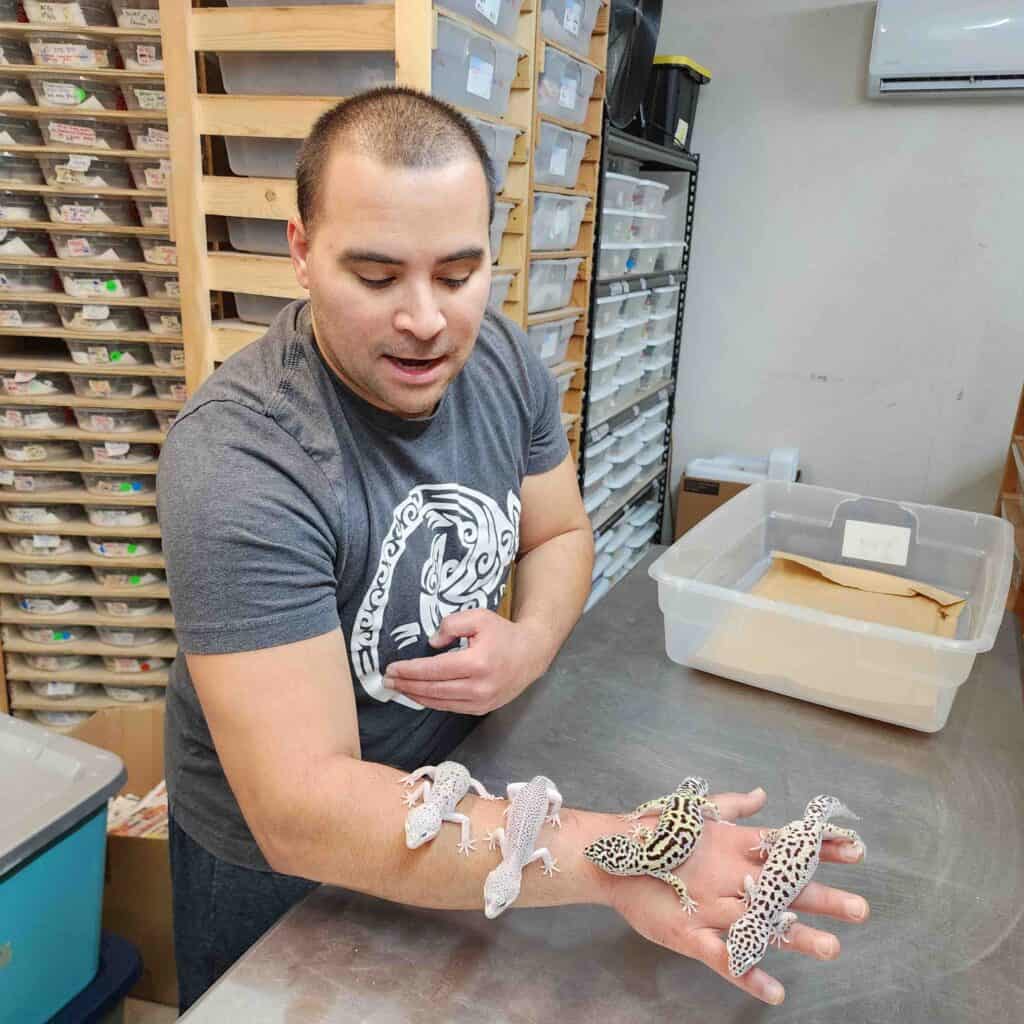
Subspecies of Mack Snow Leopard Gecko
Most subspecies aren’t found in the wild. Some are more white than others, although the geckos tend to become more yellow as they grow older. When looking for a gecko for sale, ask an animal specialist about the available subspecies.
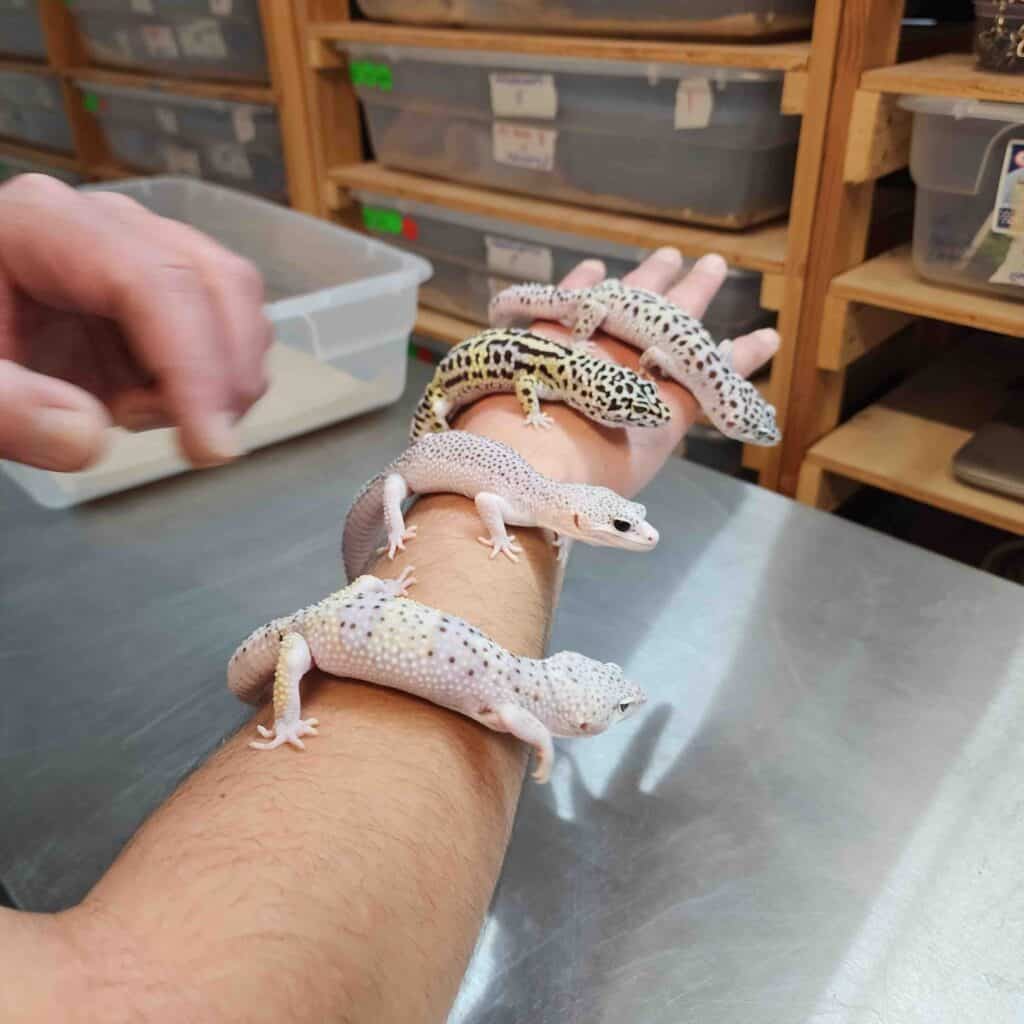
Color Morphs of the Mack Snow Leopard Gecko
Mack snows come in various color morphs through selective breeding, but the most common ones come in a pristine white color with black spots.
- Mack Snow Albino: A light-colored version of this dotted gecko, where the dots are light brown, and the eyes are red.
- Mack Snow Ghost: This is a pastel-colored gecko, so it might look sea-green or cream with a few black spots.
- Mack Snow Patternless: Different-sized spots cover the body, so the head might be darker. These geckos become whiter with age.
- Mack Snow Enigma: Light-colored geckos with blotchy black spots.
- Mack Snow RAPTOR: This is an all-white gecko with yellow spots and red eyes.
Captive Care for a Mack Snow Leopard Gecko
These little creatures are fantastic companions, and providing them with the best care guarantees they will thrive for years.
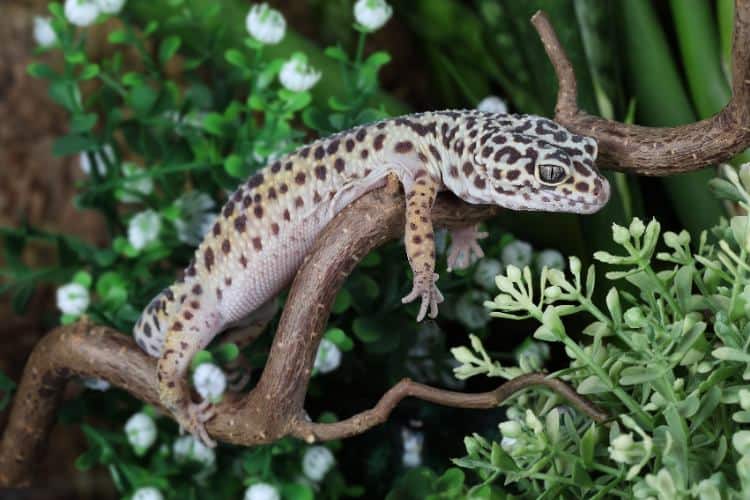
Housing Requirements
Creating a cozy and safe environment for your gecko starts with a suitable
Having a happy gecko is all about mimicking its natural habitat. So, choose coconut coir or reptile carpet for their substrate. It should be easy to clean and comfortable for your gecko to walk on.
Maintaining consistently warm temperatures is a must. So, provide a temperature gradient, with a warm side around 90°F and a cooler side between 70 and 75°F to mimic night time temperatures.
These nocturnal creatures appreciate a day-night cycle. As a matter of fact, a low-wattage, full-spectrum bulb can simulate natural light patterns.
It’s no secret that Mack Snows love their privacy. Offer a few hideouts, like half logs or small caves, where they can retreat when they want some "me time."
Diet and Health Care Needs
Mealtime with these exotic creatures is like a culinary adventure. They are insectivores, relishing a menu of crickets, mealworms, and even small roaches. Dust their food with
Offer food every other day for adult geckos, but keep it daily for the baby leopard geckos. Be sure to remove uneaten insects after 15 to 20 minutes to keep the
Minimize handling to avoid stress, and when you do handle Mack snows, make sure your hands are clean and dry. Watch for signs of common illnesses like metabolic bone disease, respiratory infections, or parasites to keep them healthy.
Common Illnesses
Keep an eye out for signs such as lethargy, closed eyes, lumps, weight loss, difficulty shedding, or unusual behavior. If you suspect an issue, don't hesitate to seek expert advice from a reptile vet. Early intervention can make a significant difference in their well-being.
Wild Mack Snow Leopard Geckos
What about how these little creatures live in the wild? Let’s take a look:
Natural Habitat for Wild Mack Snow Leopard Geckos
These geckos call arid regions home. Specifically, you can find them in the deserts and semi-arid areas of Central Asia.
They've adapted to thrive in sandy, rocky terrain, where they can find shelter among crevices and under rocks. It's essential to recreate the arid conditions, temperature, and terrain they're accustomed to, ensuring they feel comfortable and secure.
Diets and Behaviors in the Wild
In their natural habitat, Mack Snow Leopard Geckos are resourceful insectivores.
They primarily feast on a diet of insects like crickets, moths, and small arthropods that are abundant in arid regions. They’re patient stalkers, waiting for the right moment to pounce on their unsuspecting prey.
At night, they emerge from their hiding spots to hunt for food, explore their territory, and socialize with other geckos. This nocturnal lifestyle helps them avoid the scorching daytime temperatures in their native environment.
Breeding Habits in the Wild
Mack snow leopard geckos have some intriguing courtship rituals and breeding habits.
During the breeding season, males may stake out specific areas and even emit chirping sounds to attract potential mates. When a female approaches, the male performs a captivating dance, displaying his vibrant colors and charming patterns to impress her.
If the courtship is successful, the female will lay eggs in a hidden, underground nest.
Wrap Up
Mack snow leopard geckos are definitely a valuable addition to the collection of every gecko lover. They will undoubtedly bring a dash of fun and excitement to your life, making every day an adventure filled with curiosity and playfulness.
Although these geckos are characterized by their snowy bodies and black spots, there are several other color morphs to explore. They like to feed on insects and prefer to live in warm enclosures.


